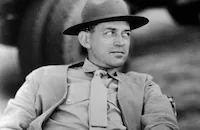New Moon

Brief Synopsis
Cast & Crew
Robert Z. Leonard
Jeanette Macdonald
Nelson Eddy
Mary Boland
George Zucco
H. B. Warner
Film Details
Technical Specs

Synopsis
In 1789, the Duke de Vidier, a young French aristocrat, renounces his claim of nobility to further the cause of the revolution by freeing the bond servants in New Orleans. Then while posing as a deported servant named Charles Michon, the duke sails on a ship bound for New Orleans, where he meets the spoiled Marianne de Beaumanoir, who mistakes him for a ship's officer. At the family plantation in New Orleans, Marianne is shocked when she discovers that Charles is her new footman. The town gossips are enthralled by the charming and sophisticated footman, who claims he worked for a dashing duke, and Marianne falls in love with him. Consequently, when the Vicomte Ribaud appears at the plantation to arrest the duke, who he claims is impersonating a servant, Marianne orders Charles to leave. Learning that his plot has been uncovered, Charles rallies the bond servants to seize a ship named the New Moon , and they sail off to freedom. A lonely Marianne decides to sail back to France on the next available ship, and hence, she and her aunt board the Fleur de Lys , a vessel bearing a cargo of brides bound for Martinique. At sea, the New Moon attacks the Fleur de Lys , and in the ensuing battle, the New Moon is sunk and her men take command of the Fleur de Lys and her cargo. During a severe storm, the ship is thrown off course and wrecked on the reef of an unchartered island. After settling on the island, Charles announces that the men and women should pair off to establish a new society based on liberty and equality. This presents problems for Marianne, who is pursued by a pack of suitors, and out of desperation, she reluctantly agrees to marry Charles, who she has decided is an incorrigible womanizer. On their wedding night, the roar of cannons draw the men to shore in defense of their new home, and a terrified Marianne realizes that she really loves Charles. When Charles returns with the news that the French fleet has arrived with news that France is free, he and Marianne declare their love for each other.

Cast

Jeanette Macdonald

Nelson Eddy

Mary Boland

George Zucco

H. B. Warner
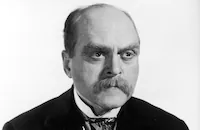
Grant Mitchell
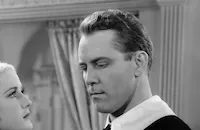
Richard Purcell

John Miljan

Ivan Simpson
William Tannen
Bunty Cutler
Claude King

Cecil Cunningham

Joe Yule

George Irving
Edwin Maxwell
Paul E. Burns
Rafael Storm
Winifred Harris
Stanley Fields
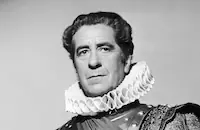
Robert Warwick
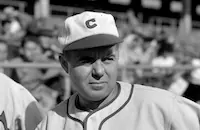
Ray Walker
Trevor Bardette
Leroy Mason
George Lloyd
Gayne Whitman
Warren Rock
George Magrill
Ed O'neill
Sarah Edwards
Max Marx
Jack Perrin
Alden Chase
Claire Rochelle
Frank Elliott
Kenneth Gibson
Victor Kendall
Gerald Fielding
Bea Nigro
Florence Shirley

Hillary Brooke
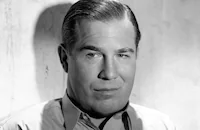
Nat Pendleton

Buster Keaton
Christian J. Frank
Arthur Belasco
Edward Hearn
Nick Copeland
Gino Corrado

Ralph Dunn
Harry Strang

Ray Teal
Ted Oliver
Fred Graham
Dorothy Granger
June Gittelson
David Alison
Forbes Murray
Abe Dinovitch
Sally Mueller
Austin Grant
Jean Fenwick
Frank Remsden
Jewel Jordan
Crew
Adrian
Robert Arthur
Hugh Boswell
Lorraine Bridges
Jack Dawn
Clyde De Vinna
Jacques Deval
Cedric Gibbons
Oscar Hammerstein Ii
Eddie Imazu
Harold F. Kress
Robert Z. Leonard
Claude Joseph Rouget De Lisle
Oliver Marsh
Val Raset
Sigmund Romberg
Douglas Shearer
Gile Steele
Herbert Stothart
Marvin Stuart
Edwin B. Willis

Videos
Movie Clip



Trailer
Film Details
Technical Specs

Articles
New Moon
Some of those hits almost didn't see the light of day, however. "Softly as in a Morning Sunrise" and "Lover, Come Back" were only afterthoughts, added after New Moon had flopped in one of its original out-of-town previews in 1928. The production was shut down for five months while almost everything about it was changed. But they must have gotten it right, as it moved on to a triumphant Broadway run of more than 500 performances.
MGM first bought the rights to New Moon in 1930, looking for a vehicle for its two operetta stars of the era, Lawrence Tibbett and Grace Moore. For some reason, however, they changed the plot, moving the setting from late 18th-century New Orleans to Russia shortly before the Revolution. As good as her singing was, however, Moore's weight problems led to the end of her MGM contract. Ironically, the studio would later seek her for two vehicles that helped make MacDonald a star, Naughty Marietta (1935) and Rose Marie (1936).
By 1940, studio head Louis B. Mayer wanted a vehicle to re-unite his favorite singing stars. After they had scored hits with their 1935 teaming in Naughty Marietta and a string of profitable operettas, he had tried to double his profits by splitting the team up. But without each other, MacDonald and Eddy just didn't have the same magic. Mayer wanted a vehicle similar to the one that had brought them together, and New Moon seemed to fit the bill perfectly. Both were set in French-controlled New Orleans (a historical inaccuracy as it turns out, since the city was actually a Spanish colony at the time) and both dealt with a nobleman traveling to the New World in disguise.
Mayer assured that New Moon would be a lavish production. MacDonald had 16 period costumes, some of them as wide as six feet. In fact, her dressing room had to be equipped with a double door so she could get in and out - and even then she had to walk sideways.
One curious footnote on the casting was the presence of silent screen clown Buster Keaton. By this point in his career, he was working as an uncredited gagman at MGM. Although originally cast in a supporting role he was cut from all but a few crowd scenes, effectively reducing the former cinematic genius to an extra. In fact, none of his biographies even mention his work on New Moon. Ironically, one thing critics would complain about in reviewing the film was the lack of strong supporting roles, despite the presence of such solid character players as Mary Boland and George Zucco. Any criticism, however, was overshadowed by the pleasure of film fans, who helped make New Moon a box-office hit.
Producer/Director: Robert Z. Leonard
Screenplay: Jacques Deval, Robert Arthur
Based on the operetta by Sigmund Romberg, Oscar Hammerstein II, Frank Mandel, Lawrence Schwab
Cinematography: William Daniels
Art Direction: Cedric Gibbons, Eddie Imazu
Music: Herbert Stothart, Sigmund Romberg
Cast: Jeanette MacDonald (Marianne de Beaumanoir), Nelson Eddy (Charles Mission, Duc de Villiers), Mary Boland (Valerie de Rossac), George Zucco (Vicomte de Ribaud), H.B. Warner (Father Michel), John Miljan (Pierre Brugnon, Overseer).
BW-105m.
by Frank Miller

New Moon
Quotes
Shall I cook, or do you prefer, I milk a goat?- Marianne de Beaumanoir
Try cooking! Men are more lenient than goats!- Charles Duc de Villiers
Trivia
Notes
The working title of this picture was Lover Come Back, and it was broadcast on television as Parisian Belle. Hollywood Reporter news items in late November 1939 note that director W. S. Van Dyke worked on this film for about two weeks, but was reassigned to direct I Take This Woman, leaving producer Robert Z. Leonard to take his place. An item in Hollywood Reporter comments that Nat Pendleton was to have appeared in this picture. Pendleton can be seen very briefly early in the picture as a bondsman standing next to Nelson Eddy. It is possible that his part was intended to be longer but was cut prior to the film's preview. In the same scene, silent star Buster Keaton is seen on the opposite side of Eddy, however, he is also unbilled in contemporary sources. According to Hollywood Reporter, the steamboat scenes were filmed by Clyde de Vinna at Santa Catalina Island, CA. Reviews commented on the similarity between this film and M-G-M's 1935 film Naughty Marietta, which also starred Eddy and Jeanette MacDonald. In 1931, M-G-M filmed another version of New Moon starring Grace Moore and Lawrence Tibbett (see AFI Catalog of Feature Films, 1931-40; F3.3107).




